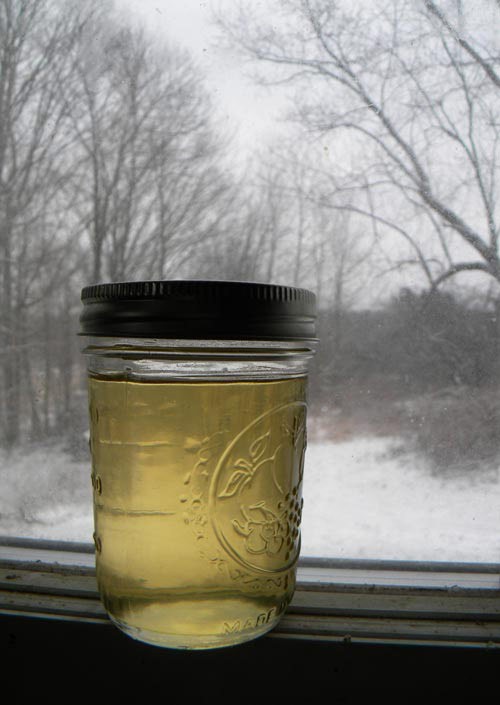There are three weekends of rifle season in Vermont, and as such the season unfolds in acts, like a play. We opened the first act on Friday night, the boys arriving in camp at various times throughout the evening. My brother Trev and his three-year-old daughter Tess came up over the mountain in his UTV – they call it a buggy. She was fast asleep on his lap as they pulled into camp at dark.
Tess is too young to stay over, but she joined us for dinner. She helped cut the onions and fry the sweet corn. We helped her with her storytelling, specifically her deer stories, which to this point are blunt affairs. “What’d we see coming in, Tess?” “A deer.” “What kind a deer?” “A buckaroo.”
We showed her how to lower her voice to make the story more dramatic. Gave her some choice opening lines. (“So there we were, Dad and I, the buggy slogging up a sheer mountain trail, when to our left – a big king buck!”) Our fingers splayed out above our ears to look like massive horns.
She looked at us like we were nuts.
The first act of the season ended for me on Tuesday the 19th, when I shot a bear on top of a mountain in southwestern Vermont. No hunter that I know feels hunky dory about the act of killing, a feeling that’s intensified with an anthropomorphic creature like a bear. The animal charged when I shot it, something that’s never happened to me with a whitetail. Afterwards, I said a prayer and told her that in a different life she’d be the one with a gun.
We processed the bear, which was beechnut fattened and delicious, into steaks, burgers, and roasts and rendered a gallon and a half of bear grease. It was my first time processing bear fat. I did a quick google search and the first how-to page I found suggested running the fat through a grinder, which was sensible advice. Short of grinding it, dice it as finely as you can. Putting it in the freezer to chill it first makes grinding or dicing easier.
The render is accomplished by heating the fat over low heat. One webpage suggested adding equal parts water to the fat, but this didn’t work for me. When I tried that, the pot just simmered until all the water evaporated, then the fat started to render. I’d suggest adding just enough water to the pan to prevent an initial scald. Low and slow is key.
When the fat stopped sputtering and steaming I strained it to remove the cracklings and then filled half-pint canning jars with the pale yellow oil. I couldn’t get a good answer as to whether I needed to hot-water process the jars, so I just threw them in the freezer, where they solidified, sort of, into white lard. Interestingly, though, when thawed they revert back to oil. Everything you read online shows creamy, Crisco-looking fat. I don’t know why this isn’t happening to mine – could it be there’s still too much water in it? It’s pure enough to run an oil lamp.
If any of you out there have any insight into the liquid versus solid question, please chime in. In the meantime, I’m just going to cut it with butter to make lard for Thanksgiving pies. Otherwise I’ll use it like cooking oil.
Anyway, act two of the season featured a dramatic turn in the weather. It was as cold last weekend as I can ever remember during rifle season, which was miserable to hunt in, but nice considering all the warm weekends we’ve had over the past decade. Last Friday I had a shooter buck appear in my scope and then disappear into swirling fog. I didn’t see or hear him leave, he was just there then gone. A ghost disappearing into the mist.
How’s your season going?



Discussion *